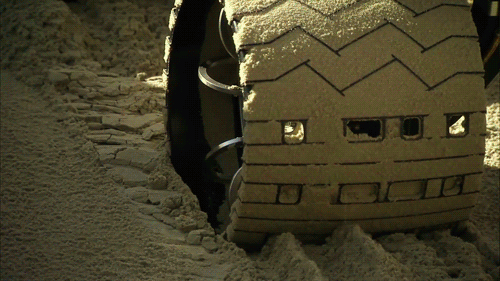Mars Curiosity's triumphant landing one year later
NASA's Mars Curiosity Rover landing grabbed headlines in August 2012, when more than 3 million people tuned into a livestream and watched the machine’s final approach and touchdown on the red planet.
For flight director Bobak Ferdowsi, the importance of the landing goes even further.
"The whole thing of us wanting to do things like this -- it's sort of a human question, right? It's the classic Everest 'let's scale the mountain because it's there' sort of thing," Ferdowsi tells "TechKnow" contributor Phil Torres. "But, two, it's also this incredible question of 'what does it mean to be alive?' We're going to Mars to understand. Could life have survived there?"
Ferdowsi, aka "Mohawk Guy," became an overnight internet celebrity following the landing stream because his hair—styled in a kind of Mohawk and painted red, white and blue—was easily identifiable to viewers of the livestream.
Even President Obama got wind of who he was.
"I think a lot of us who work here works on this as a hope for seeing man walking on Mars or women walking on Mars, hopefully both, in the near future," Ferdowsi says. "The president has said the same thing. He wants to see that in the 2030s. So, we're not too far."
The attention has been surprising but not as surprising as his real job as a flight director is every single day.
"I don't think I could've conceived of this job as a kid," Ferdowsi says. "It's a surreal experience to know that you're talking to an object on another planet."
Now, Ferdowsi's using the attention to teach people more about the work he and NASA do. Part of that is having Curiosity talk back throw the web.

For day-to-day humorous updates about the rover, you can follow Curiosity on Facebook and Twitter for a window into the work NASA does with space missions on a regular basis.
Curiosity wasn't launched without extensive preparations, and Phil also explores the JPL "Mars Yard," an outdoor area constructed so that its terrain matches what NASA knows about the surface of Mars.
Here, NASA's robotic prototypes and vehicles are tested to make sure they can withstand the environment they'll be exploring.
"You only have this one opportunity to get things right there," says Ferdowsi.
The Mars Yard is 21m x 22m and a combination of beach sand, granite, brick, and volcanic rock. It allows NASA's scientists and engineers to make mistakes and push the limits of their technology in a controlled setting.

Since the successful August 2012 landing, Curiosity has collected and shared thousands of new images and preliminary readouts on soil samples it’s tested for NASA scientists to further analyze.
Elachi says, "By doing drilling at some locations on Mars, we've found that the ingredients which exist on Mars are the same ingredients which are part of life on Earth,” says JPL director Dr. Charles Elachi.
For example, beneath the red rock that gives Mars its nickname of “Red Planet," scientists are now seeing a gray-colored rock very similar to what's commonly seen on Earth every day.
"So, the same molecules -- oxygen, carbon, nitrogen, sulfur, phosphorus -- that are part of us, which created life on earth, they all exist on Mars," Elachi says.
The challenge for Curiosity going forward will be to keep it running and busy. One NASA employee told Dr. Elachi that her favorite thing about working at the Jet Propulsion Laboratory was that she and her colleagues came in everyday, listed the impossible, and then tried to achieve it.
Now that NASA has landed an advanced robotic rover on Mars, the next step is test exactly how much of a new world they can cover from an entire planet away.




Error
Sorry, your comment was not saved due to a technical problem. Please try again later or using a different browser.